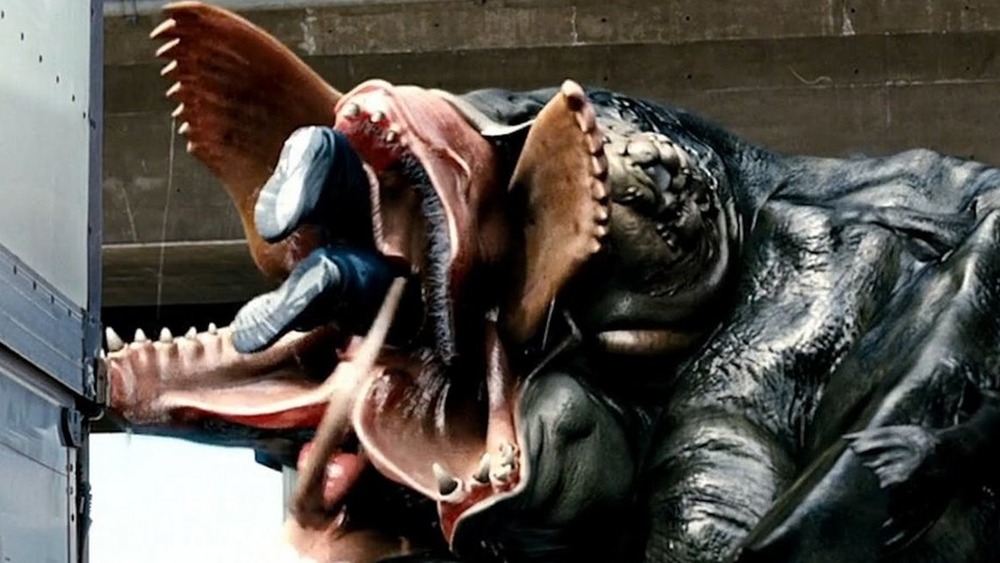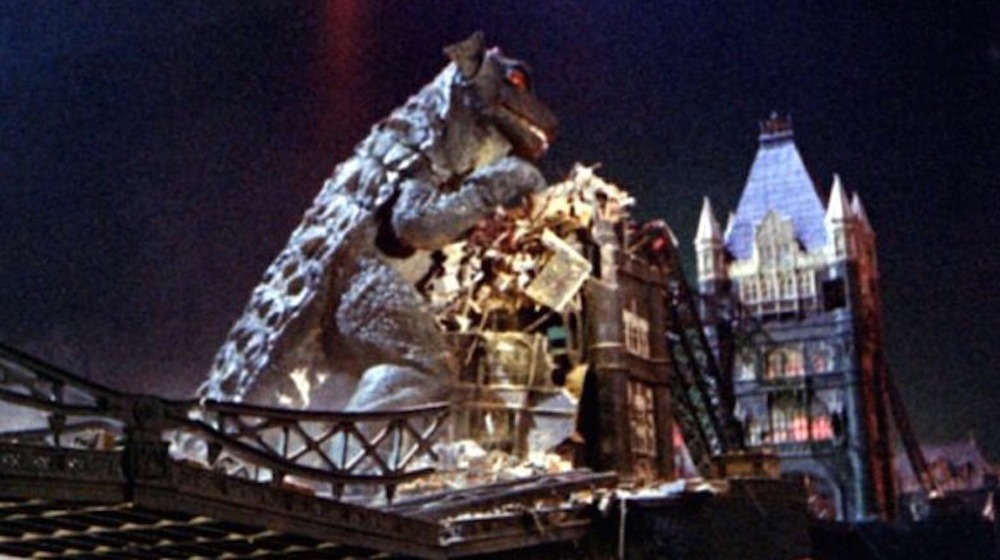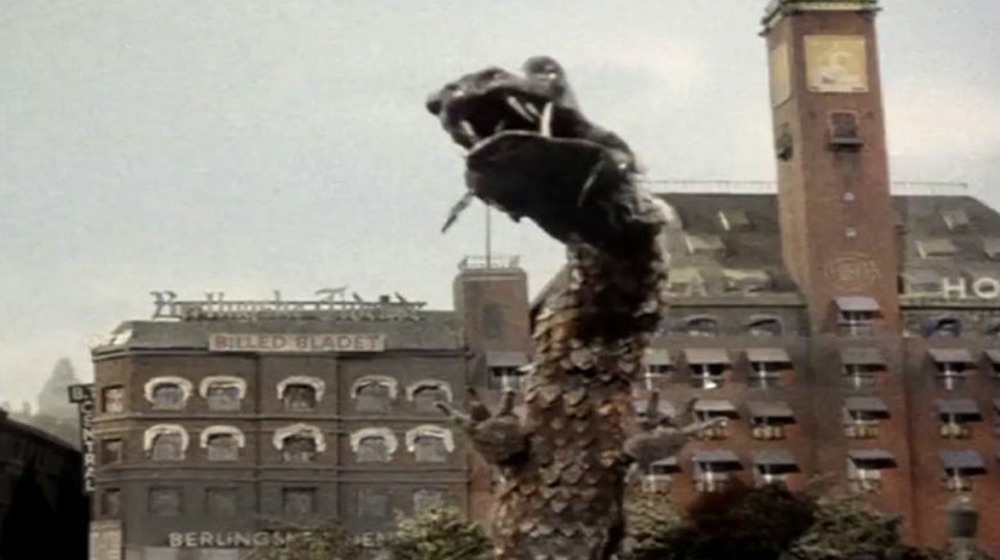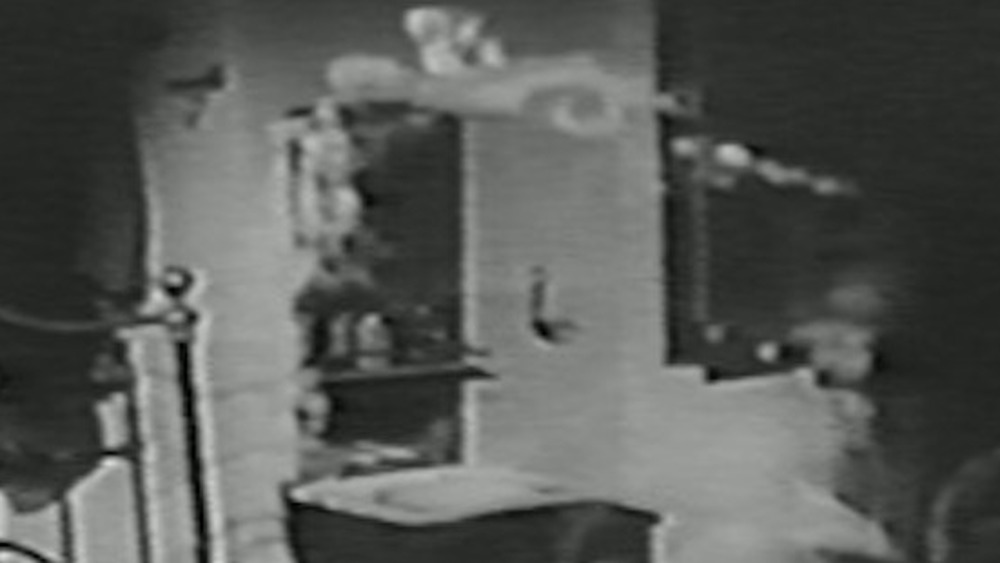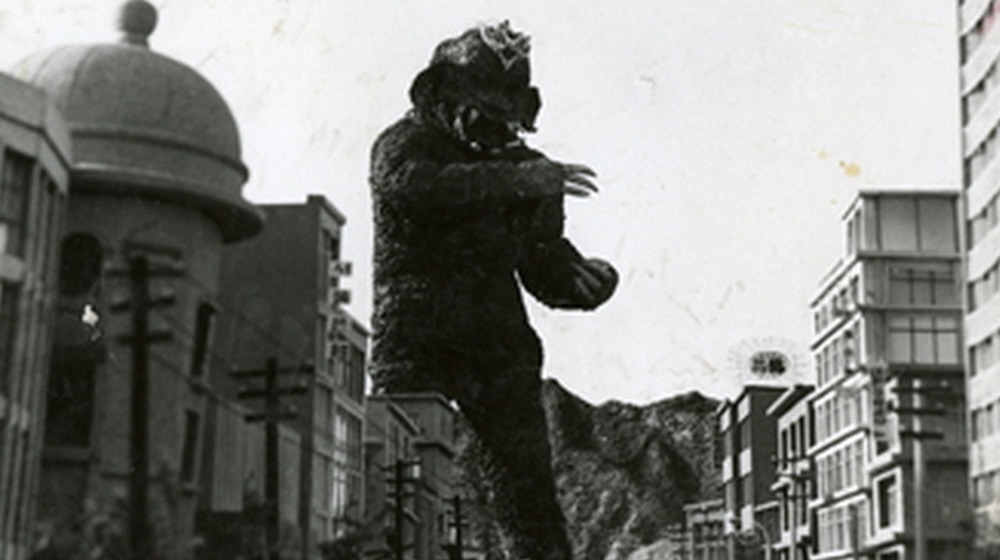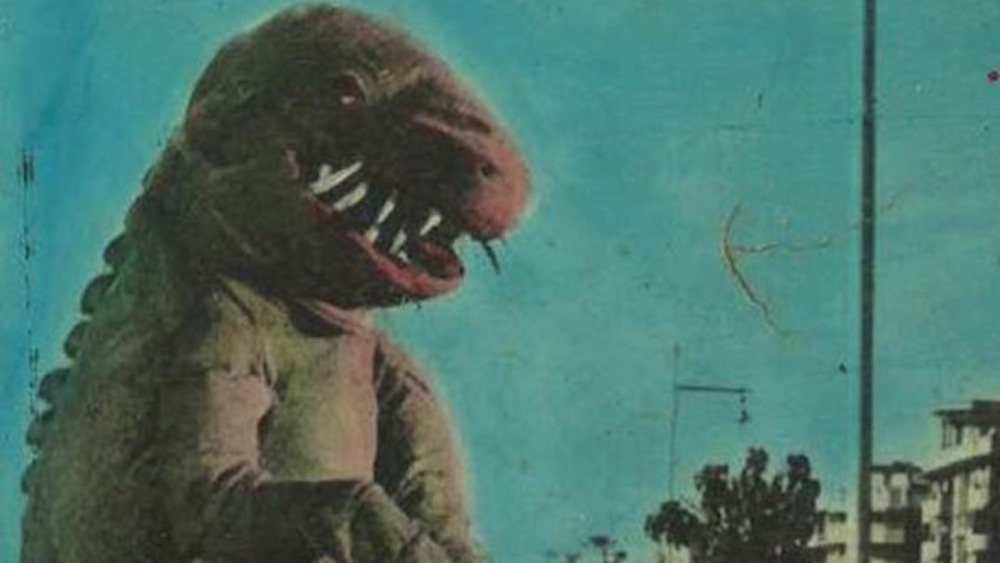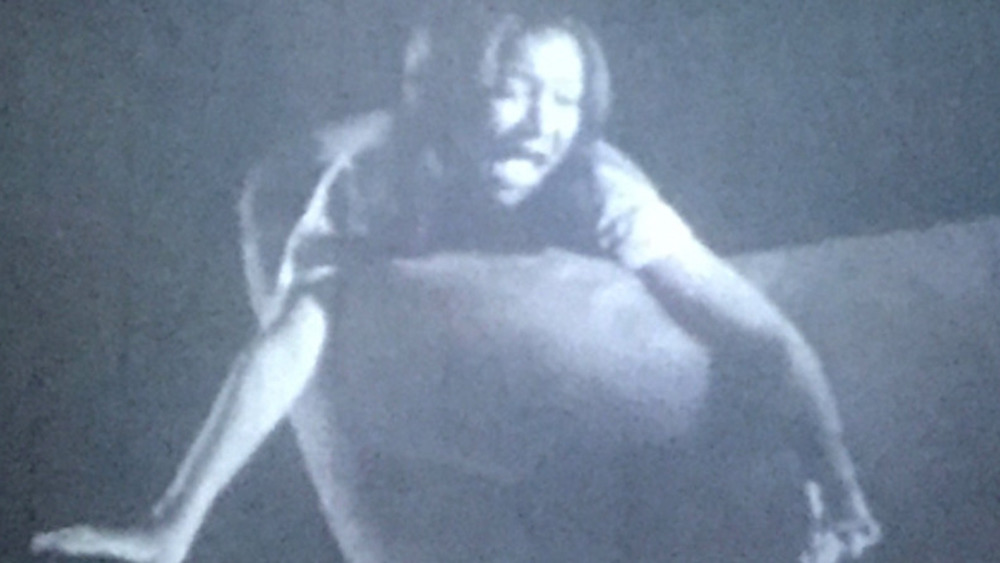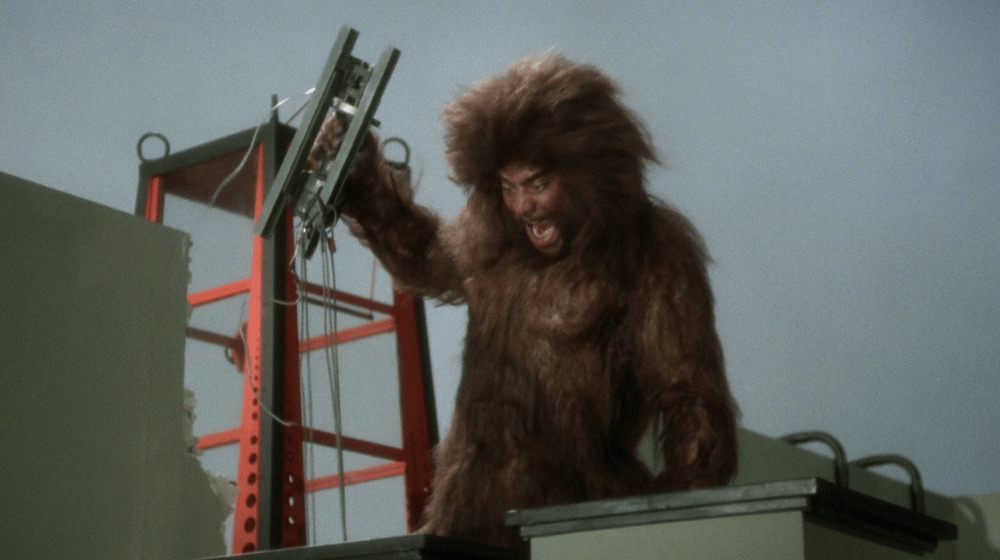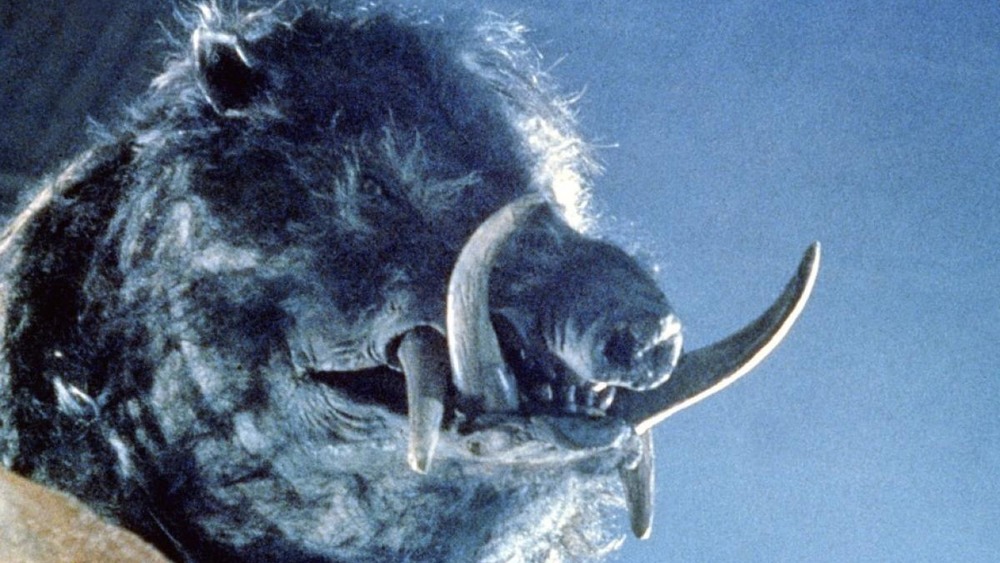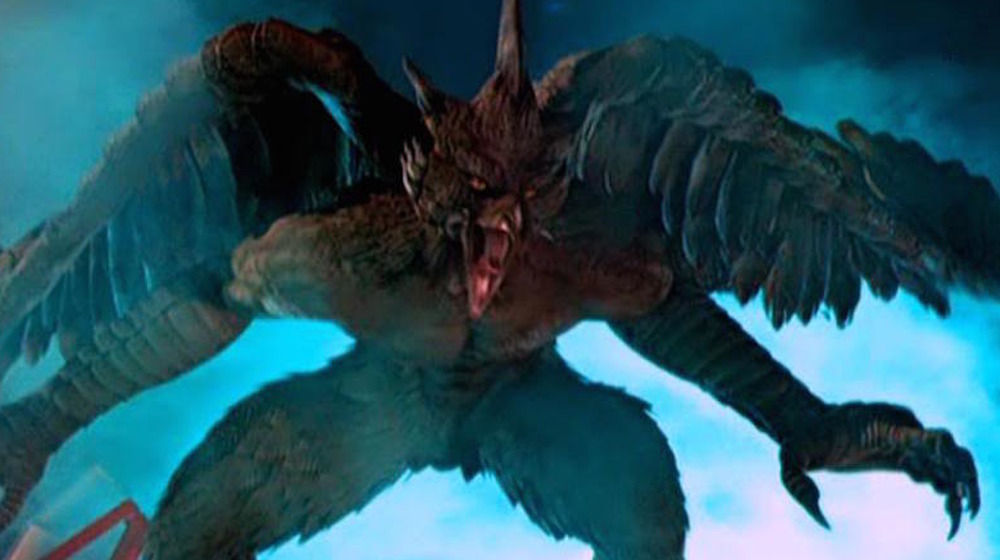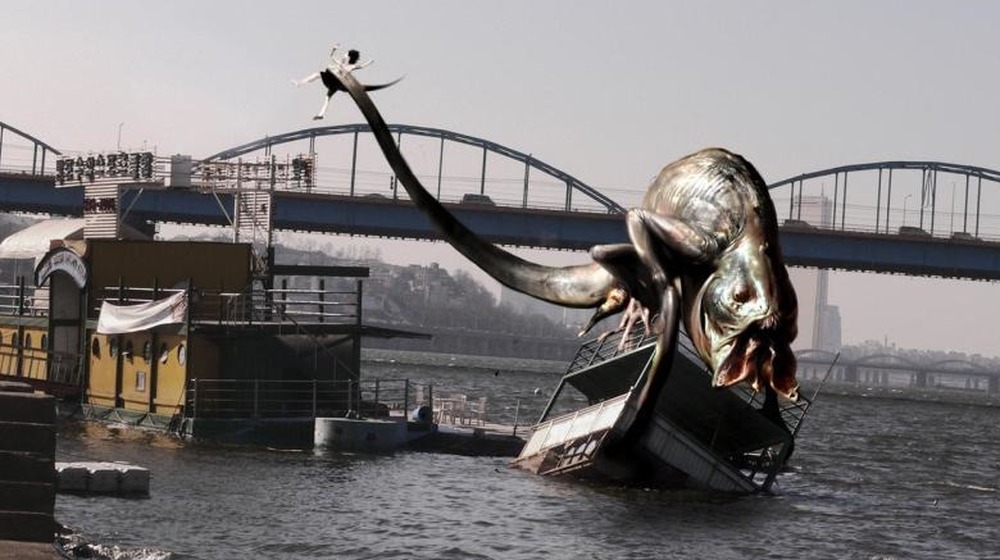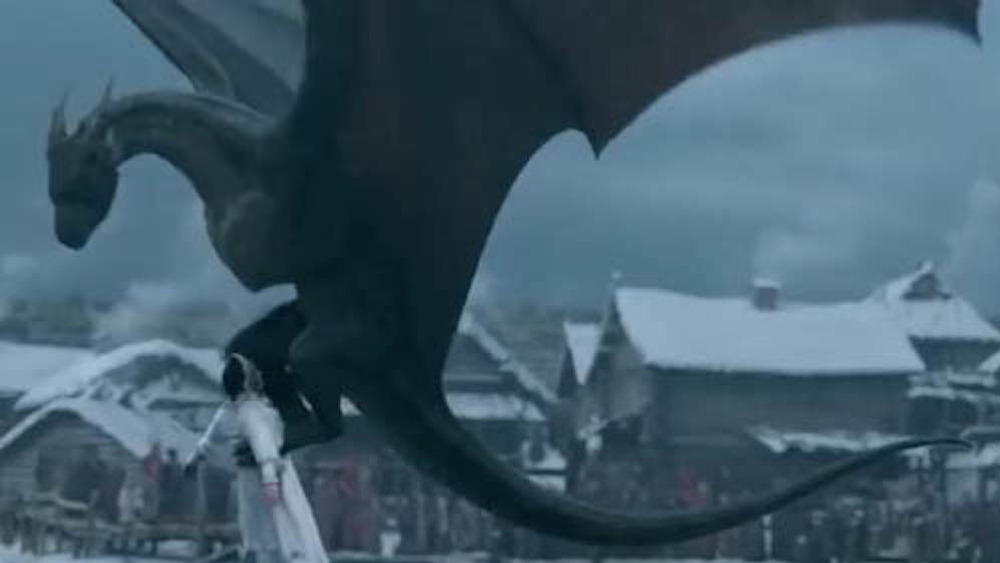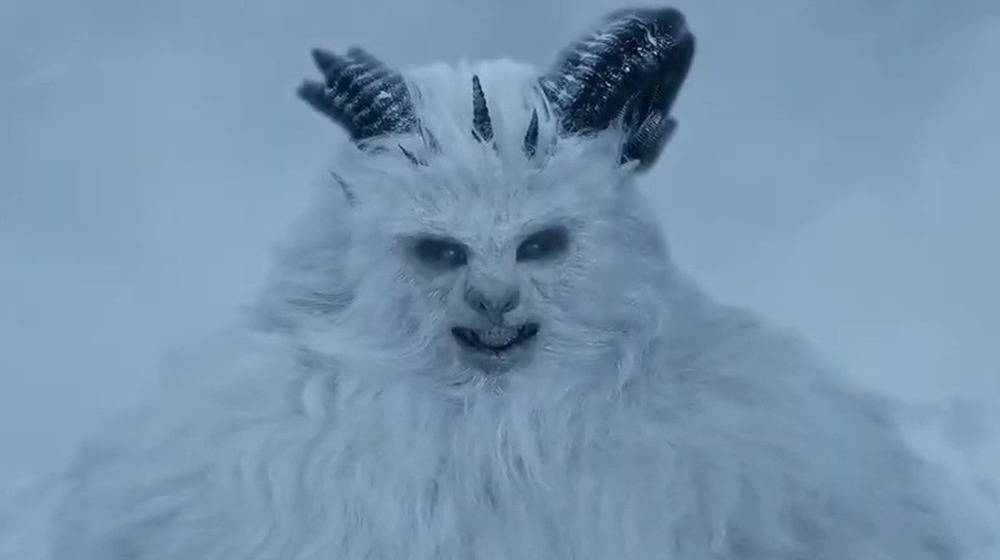Giant Movie Monsters From Around The World
Ask anyone to name a giant movie monster, and chances are, you'll get one or more of the Big Three: Godzilla, King Kong, and the T. Rex from the Jurassic Park franchise. A few savvy sci-fi types might reel off Ray Harryhausen's Rhedosaurus from The Beast from 20,000 Fathoms or Gamera, the giant turtle. Based on those choices, you might think that all oversized movie monsters hail from the United States and Japan. But many countries around the world can count a kaiju-styled title in their cinematic output; some, like Thailand, have their own homegrown monster industry, devoted to Hollywood-and Toho-inspired beasts plus a few from their own myths.
Following is a list of giant monsters that tore up miniature cities and battled model armies in movie theaters across the globe. Some are old-school suitmation creations like Godzilla, while others are rendered with impressive computer graphics and model work. Most of these disasterpieces were intended to keep grade-school and teenage audiences happy while tipping into the ticket sales of American and Japanese product, although at least one — Bong Joon-ho's The Host — uses the monster movie format to address social and political ills. What's consistent among all these is their sheer entertainment value: whether deliberate or unintentional, these movies are lots of fun, and in their own (sometimes very limited) way, tap into that sense of excitement and awe that the best monster movies — giant and otherwise — can produce. Check your ticket at the gate and prepare for an around-the-world tour on Air Giant Monster.
Warning – spoilers ahead.
Gorgo: one mother of a giant monster
One of the most satisfying giant monster movies of the 1960s or any decade, Gorgo, is a 1961 joint effort between American, British, and Irish production companies. It was directed by Eugene Lourie, who also helmed one of the best Stateside giant monster pictures, The Beast with 20,000 Fathoms (and one of the stiffest – The Giant Behemoth). Producers the King Brothers had scored a hit in 1957 with Rodan, which they had re-edited and distributed in the United States, and took a few tips from that Ishiro Honda film for their own creature feature. As in Rodan, Gorgo features two monsters with a close connection — the amphibian dinosaur Gorgo is revealed to be the offspring of its much larger mother — which lends some weight and purpose to mom's rampage through London beyond just wreckage (though it's pretty impressive all the same).
Lourie, who also conceived the story with co-scripter Daniel James (an uncredited writer on 20,000 Fathoms), also echoed Rodan by investing equal energy into the monster and human components of the film. The relationship between treasure hunters Bill Travers and William Sylvester and scrappy Irish orphan Vincent Winter (later a production manager and/or assistant director on all three Superman movies with Christopher Reeve) again boosts the picture above the usual smash-and-crash monster material. Charlton Comics later issued a 23-issue series which pitted Gorgo and its mother against a host of equally oversized menaces.
Reptilicus, pronounced ridiculous
If you followed Mystery Science Theater 3000: The Return, then you saw Denmark's contribution to the giant monster subgenre: Reptilicus, a 1961 science fiction thriller about an enormous dragon-like dinosaur with regenerative abilities that made it nearly impossible to kill. The movie was the brainchild of American movie theater owner turned producer Sidney W. Pink, who commissioned two versions to be made at the same time –- one in Danish, the other in English –- with virtually the same cast. Unfortunately, neither version could improve on the design of the monster, a stiff marionette that wiggled and bumped feebly against the elaborate miniature sets.
American International Pictures, which had agreed to distribute the English-language version, reportedly deemed the film unreleasable, and imposed an extensive revamp that included primitive visual effects which made Reptilicus spew corrosive green slime. American audiences might have preferred seeing the Danish version, which features scenes of Reptilicus in flight and extended comedy scenes (including a musical number!) with beloved Danish comic actor Dirch Passer. Charlton Comics also issued a title based on the monster, which was redubbed Reptisaurus after two issues; a novelization was also released in 1961, which is highly sought after by collectors for its addition of several racy sequences that never appear in the film.
Listen up -- it's the Sound of Horror
It's an age-old problem faced by many independent and international horror and science fiction movies: how do you create a convincing monster with a non-existent effects budget? The 1965 Spanish production Sound of Horror offers a novel and cost-efficient solution: make the creature invisible! The gimmick is actually effective in a few scenes: the monster, a dinosaur hatched from an egg unearthed by a multinational team of archaeologists digging in Greece, only appears as a vague bit of animation in certain scenes, but it makes its presence known by ceaselessly screaming its head off (it's the sound of horror, after all) and tearing the archaeologists to bloody bits.
When the monster finally materializes at the climax –- it's set ablaze by an exploding jeep and revealed to be just another actor in a dodgy rubber suit –- it's actually a bit of a disappointment. But director Jose Antonio Nieves Conde actually wrings a surprising amount of suspense from the premise, most notably the finale, in which the surviving team members hunker down in a villa while the monster screeches and stomps outside.
Space Monster Wangmagwi is South Korea's unseen kaiju
Space Monster Wangmagwi is an early entry in South Korea's small but significant contributions to the giant movie monster universe (see also: Pulgasari and D-War). The creature –- a scaly, snaggle-toothed bruiser with the ability to spew flammable liquid from its head — is intended to serve as muscle for an alien invasion of Seoul, but becomes distracted from its task by the comely bride of a military pilot, which it drags along, Fay Wray-style, on its errand of toppling buildings and spreading terror.
Its campaign of destruction is eventually met by the combined efforts of the Korean army and a scrappy orphan named Squirrel, who climbs into one of Wangmagwi's huge ears and goes to work with a knife. At least, that's what we think happens: Space Monster Wangmagwi has never been released on home video in South Korea, and save for a few seconds on YouTube, has never been seen by Western audiences. Most of the available information on the film comes from post-screening reports and a handful of stills.
Go, Go, Gogola!
India's first, and by all accounts, only attempt at a giant monster film is 1966's Gogola, which, like Space Monster Wangmagwi, is a lost film, though a wealth of stills and even cuts from the soundtrack can be found at various online sources. The few detailed plot synopses suggest that Gogola borrows a few elements from the first Godzilla film: like his Japanese cousin, Gogola is a bipedal aquatic reptile with a talent for breathing fire and a taste for extreme urban renovation. There's also a love triangle involving a teenager who volunteers to deliver a fatal serum to the monster, his girlfriend, and a rival who wants to claim both the girlfriend and the credit for killing the creature.
Budget and culture separate the two movies: Gogola is played by actors in a saggy costume that resembles burlap, and as this source notes, the action stops cold for the cast to perform a Bollywood musical number before unleashing the might of the Indian military on the monster. While it's unlikely that we'll ever get to see that sequence, you can enjoy the audio portion here.
Supergirl vs. a guy in a frog suit
In the grand tradition of the Indian Superman and the Turkish Captain America and Spider-Man comes 1973's Supergirl, a very loose Filipino take on the Girl of Steel. Actually, the connection between DC's Supergirl and the character played in the film by actress Pinky Montilla essentially ends with the name and costume: this Supergirl earns her powers when, after being knocked unconscious by thieves, she is visited by the Virgin Mary (!), who gives her a ring that provides her with flight and super-strength.
But, you ask, where's the giant monster? That comes courtesy of the movie's villain, a witch (played by Odette Khan) who works overtime to bring her daughter's dead husband back to life. An experiment on a dead frog is a success, but has an unexpected side effect: it causes the little croaker to grow to Godzilla size and tear up Supergirl's village. The creature — an actor struggling to stand upright in a stiff rubber suit — manages to squash a few people and even grabs one with its tongue before Supergirl turns out the lights with a flurry of punches. Though its screen time is brief, the monster frog is just one of many amazing sights (including a zombie army) in this enjoyable actioner, long thought lost until a 16mm print was discovered by Australian director Andrew Leavold in 2016.
Get down with Yeti: Giant of the 20th Century
Movie depictions of the Yeti/Abominable Snowman tend to run in one of two directions: cute and fluffy (see Smallfoot and 2019's Abominable), or murderous man-beast, like the one that rips off a man's leg and beats him to death with it in SyFy's Yeti: Curse of the Snow Demon. Somewhere between these two furry poles is the super-sized snowman in Yeti: Giant of the 20th Century (aka 20th Century Giant), an Italian fantasy film lensed in Canada in 1977.
The then-recent Dino De Laurentiis take on King Kong is the clear inspiration for Yeti: a legendary creature is discovered in a remote region, a disreputable businessman wants to use the beast for commercial gain, and the monster's eventual rampage is calmed by a young woman (Antonella Interlenghi from Lucio Fulci's Gates of Hell). But as with many Italian-made movie carbons, it's the little differences that make Yeti memorable, like the shaggy suit for the creature, which allows actor Mimmo Crao to mug and scream with goggle-eyed abandon. Similarly, the De Laurentiis Kong never had a disco theme song on par with this cut by the Yetians ("He is so biiiig!").
This little piggy eats people in Razorback
The 1984 Australian film Razorback is the best giant pig movie ever made, which may raise the question: are there really enough giant pig movies that one would actually stand out as the best? Surprisingly, the answer is yes: there's the mutant super-swine in South Korea's Chaw; the pig demon Zhu Baije in Hong Kong's Monkey King 2, and the Ripper, a homicidal hog in Pig Hunt. But all pale in comparison to the titular monster in Razorback, a relentless eating machine whose incredible speed and stealth (for a pig the size of a dump truck) is clearly meant to evoke a comparison to the shark in Jaws.
The animatronics that bring the pig to life may be a little rusty, but director Russell Mulcahy (Highlander) and future Oscar-winning cinematographer Dean Semler set the creature's fight with American hero Gregory Harrison in a phantasmagoric Outback, where wrecked cars hang from trees and night time is a deep, impossible blue; the visuals give Razorback a sense of dark fantasy, or, in its most gruesome moments, pure nightmare.
Garuda mixes mythology and monsters
Creatures from Buddhist and Hindu mythology have appeared in several Thai fantasy and science fiction films from the 1970s: there's a hyperactive take on the monkey god Hanuman in Hanuman vs. 7 Ultraman, while figures based on giant demon statues at palaces and temples in Bangkok appear in several films, including Jumborg Ace & Giant. More recently, Garuda, a being that served as the winged transport for Vishnu, plays a more traditional monster in the eponymous 2004 CGI-fueled fantasy from Thailand.
Discovered under the city of Bangkok during subway construction, Garuda — depicted as a pumped-up and ticked-off version of the anthropomorphic bird-man seen in some religious texts and artwork — is awakened from its eight-millennia sleep and proceeds to decimate a team of soldiers tasked with neutralizing marauding supernatural entities. Though the visual effects may not be on par with Hollywood efforts, director Monthon Arayangkoon smoothly integrates the CGI into the live-action footage and keeps the pace brisk and the action plentiful.
The Host is a monster movie with heart and energy
For most moviegoers, 2007's The Host was their first introduction to filmmaker Bong Joon-ho. The film –- about a hapless snack bar vendor (Bong Joon-ho regular Song Kang-ho) who must rise to the occasion when his daughter is abducted by a monster from South Korea's Han River — satisfied on nearly all levels, thanks to an ambitious mix of family drama, comedy, political satire, and impressive special effects (by Weta Workshop and The Orphanage, among others).
Balancing such different elements can be a tricky proposition, but Bong invests each aspect with energy and honesty: the family element is bitingly funny and sad (Song's character is written off by everyone, which gives his fight for his daughter emotional weight), and the monster scenes have the berserk energy and shocking gore that one might expect if a hungry, car-sized amphibian monster ran amok in a well-populated urban area. And the politics, aimed at thoughtless American intervention more concerned with the bottom line than its impact on a foreign country, are clever and sharp without being heavy-handed. Bong has since gone on to become an Oscar-winning filmmaker, but The Host remains one of his most memorable efforts.
From Russia with Love: I am Dragon
Giant monsters in Russian films tend to stick close to their folklore and fairy tale origins, like the dragon Zmey Gorymych or the giant Svyatogor in Ilya Muromets (The Sword and the Dragon). The 2015 Russian fantasy I am Dragon (also known as He-Dragon and He's a Dragon) puts a YA-style romantic spin on Russian monsters by filtering the classic motif of maidens and dragons through the story of Beauty and the Beast. Maria Poezzhaeva is the girl slated to marry the grandson of a medieval town's designated dragon-slayer — that is, until a dragon shows up to steal her away to its remote island home.
Once there, Poezzhaeva meets Matvey Lykov, a nameless young man with an unfortunate secret: he is the dragon that stole her away, and can remain in his (handsome) human form as long as no one touches him. This puts a crimp in their growing romance, but fairy tales often have a way of working out for all involved. I am Dragon might be a little too sudsy for some tastes, but does feature an impressive CGI creature and a remarkable scene which reveals that the island is actually part of the skeleton of an absolutely colossal dragon.
Snow Monster, land sharks - what more do you want?
What's better than a fantasy-action movie with an enormous, furry snow beast? How about one with high-jumping land sharks? And carnivorous birds? And lost tribes? You get all of that and more in the 2019 Chinese film Snow Monster. As Tarstarkas.net astutely notes, Snow Monster is a fairly close, if wintry copy of Kong: Skull Island; in fact, it appears to set up its own Monsterverse in a fade-out sequence that references giant snakes.
Whether that comes to pass remains to be seen, but Snow Monster, in and of itself, delivers a wealth of did-you-just-see-that moments, from the aforementioned land sharks' Tremors-style attack to a military assault on the Snow Monster, who responds by knocking fighter jets out of the sky with an open-palm slap. Depending on the angle and action, the Snow Monster is either an inspired CGI creation — the horns are a nice touch — or a perfectly acceptable bit of suitmation. Snow Monster doesn't appear to have a home video release as of yet, but you can find the entire movie online here.
